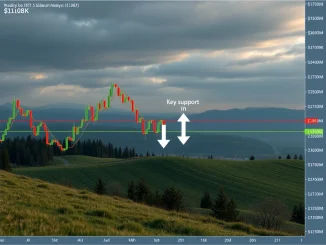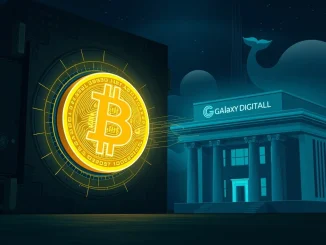
If you’ve been following the pulse of the crypto market, you might have noticed something interesting happening under the hood of the world’s largest cryptocurrency. Recent data reveals that the number of Bitcoin transactions recorded on the network has reached a significant milestone, but perhaps not the kind you’d expect. Activity has hit an 18-month low, sparking discussions about the current state of the network.
Why Are BTC Transactions Low? Unpacking the Numbers
According to analysis by The Block, the current weekly average for BTC transactions low is sitting around 350,000 per day. This represents a substantial decrease when compared to the peak levels seen just a few months ago, specifically in mid-2024, when the network was processing well over 700,000 transactions daily. That’s roughly a 50% drop in daily transaction volume in a relatively short period.
To put this into perspective:
- Peak Mid-2024: Over 700,000 daily transactions
- Current Weekly Average: Around 350,000 daily transactions
- The Change: An approximate 50% reduction
This sharp decline naturally leads to the question: what’s causing this slowdown in activity?
The Impact of Runes and Ordinals on Bitcoin Network Activity
Media outlets and analysts point to a specific culprit for the reduced Bitcoin network activity: the cooling enthusiasm for Bitcoin-native protocols like Runes and Ordinals. These protocols, which allow for the creation of unique digital assets (Ordinals) and fungible tokens (Runes) directly on the Bitcoin blockchain, saw explosive growth and popularity earlier in the year.
Their rise led to a surge in transaction volume as users rushed to mint, buy, and sell these new digital artifacts. This created significant network congestion and drove transaction fees higher. However, as the initial hype subsided and interest waned, the volume of transactions related to these protocols decreased dramatically. Since these transactions constituted a large portion of the network’s activity during the peak, their decline has directly contributed to the overall drop in the total transaction count.
What Does This Mean for the Bitcoin Blockchain?
The reduction in transaction volume has several implications for the underlying Bitcoin blockchain. While a decrease in activity might sound negative, it’s not necessarily a sign of fundamental weakness. In fact, lower transaction volume often leads to:
- Lower Transaction Fees: With less congestion, users typically pay less to get their transactions confirmed.
- Faster Confirmation Times: Miners can process the existing transactions more quickly when the mempool (the waiting area for transactions) is less full.
This period of lower activity could be seen as a natural ebb and flow. The surge driven by Runes and Ordinals was somewhat experimental and fee-intensive. The current state might reflect a return to more core use cases for the network, or simply a temporary lull as the market digests recent developments and awaits the next catalyst.
Runes and Ordinals: A Fad or a Foundation?
The significant impact of Runes and Ordinals on network statistics highlights their potential to drive activity, albeit perhaps cyclically. While the initial frenzy has cooled, the technology remains. The question now is whether these protocols will find sustainable use cases or if their primary impact was a transient surge in transaction volume driven by speculation and novelty.
Their effect on the network demonstrates how new layers and protocols built on top of Bitcoin can significantly influence its operational metrics. Future innovations could similarly lead to new waves of network activity.
Conclusion: Navigating the Ebb and Flow
The dip in Bitcoin transactions to an 18-month low is a clear indicator of shifting trends within the network, largely attributed to the reduced excitement around protocols like Runes and Ordinals. While it signifies a decrease from recent highs driven by specific use cases, it also results in practical benefits like lower fees and faster confirmations for standard transactions. Understanding these fluctuations in Bitcoin network activity, the role of protocols like Runes and Ordinals, and their effect on the Bitcoin blockchain is crucial for anyone watching the space. This current phase might just be a quiet moment before the next wave of innovation or adoption reshapes the landscape once more.



